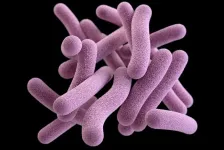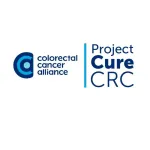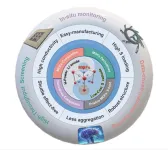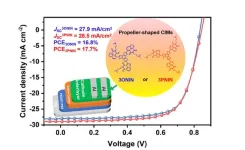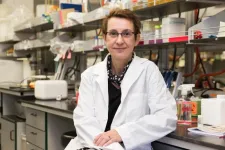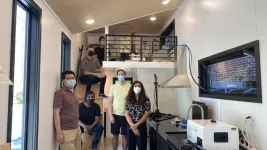(Press-News.org) February 27 — Five of the world’s leading research and education (R&E) networking organizations have joined forces to form MetrANOVA, a consortium for Advancing Network Observation, Visualization, and Analysis. Together, founding members Energy Sciences Network (ESnet), GÉANT, GlobalNOC at Indiana University, Internet2, and Texas Advanced Computing Center (TACC) operate and connect a dizzying number of national, regional, and local R&E networks — yet representing a portion of the decentralized fabric linking scientific researchers in hundreds of countries worldwide. The R&E networking community provides a network of networks, the design and operation of which have historically been loosely coupled yet coordinated and present some challenges to overcome.
“To ensure we are designing and operating networks that best serve our shared purpose — accelerating scientific research — we need a greater understanding of the whole system,” said Edward Balas, MetrANOVA lead and head of ESnet’s Measurement & Analysis group. “MetrANOVA was formed to develop and disseminate common network measurement and analysis tools, tactics, and techniques. We hope these will help member organizations and the broader R&E community better understand the structure, use, and performance of this complex, multidomain global web by using interoperable software, appropriate data-sharing techniques, and composable design patterns. Working together will allow us to do so more sustainably — by reducing duplication of effort and allowing issues to be identified and resolved more quickly — and innovatively, by harnessing the creative brain power across our human networks.”
Network measurement has long been a core competency of the R&E community, but to do it well requires expertise and technical capabilities that can be hard to acquire, inhibiting optimal design and operation of these networks.
“Research is a global undertaking, and it is therefore vital that researchers wherever they are located have access to data and resources with the highest possible performance. Only by building and supporting high-performance research networks can we remove geographical boundaries to academia. As part of this, being able to monitor network performance is an essential component of R&E networking,” said Ivana Golub, Network Development Lead, GÉANT.
The founding consortium members have each developed compelling network measurement tools, and all founding members have actively contributed to the perfSONAR consortium, using it to actively measure end-to-end performance and identify impairments.
“MetrANOVA can potentially realize a vision that the NetSage measurement and monitoring project has had for more than ten years — a shared approach that helps raise all the boats," stated Nathaniel Mendoza, TACC Chief Information Security Officer (CISO). "We're all looking at the same problem from different viewpoints, and MetrANOVA has the potential to bring us all together."
While these previous efforts successfully addressed individual organizations’ measurement challenges and needs, MetrANOVA aspires to meet the network measurement needs of the whole of the R&E networking community, building on what members have learned from past efforts. Additionally, open-source components have proliferated within the broader industry that enable state-of-the-art network measurement and analysis, such as Grafana, Kafka, OpenSearch, and PMacct, which would benefit from close evaluation and recommendation. MetrANOVA will focus on determining how to create and use a general-purpose, multi-data-source measurement and analysis environment to improve the design and operation of R&E networks.
This broad scope is by design. "Over the past few years, all of the participating organizations have built their own resilient, effective time series systems, driven by their own particular requirements, expertise, and use cases, using different balances of internal development and integration of existing software components," said David Ripley, Director of Software and Systems Engineering at GlobalNOC. "MetrANOVA is an opportunity for us to come together, combine our expertise, see how the network measurement landscape has shifted, and work collectively to come up with a universal combination of software components, deployment architectures, and operational practices that are generic enough to meet common community requirements and flexible enough to adapt to even the most niche use cases."
MetrANOVA will be supported by an inclusive participation model that provides options for both organizations that can commit dedicated resources and opportunities for those who wish to contribute individually or on a best-effort basis. The consortium seeks diverse participants with a range of skills.
“MetrANOVA reflects and reinforces a uniquely R&E community mindset: We care deeply about the shared value our network fabric provides to researchers, educators, and learners,” said James Deaton, Internet2 vice president of Network Services. “Through the consortium, we are eager to work together to reveal greater performance insights with new cost-effective, common methods for observing, visualizing, and analyzing. But even beyond development efforts, MetrANOVA is poised to open doors for meaningful engagement, bringing together new perspectives to solve long-standing challenges that span network edges and institutional boundaries.”
To learn more about MetrANOVA, attend the March 5 session, “Introducing MetrANOVA: A neutral, trusted, and open consortium for Advancing Network Observation, Visualization, and Analysis,” at the 2024 Internet2 Community Exchange (CommEX24) in Chicago, or its reprise at the GÉANT-sponsored TNC24 conference on June 12 in Rennes, France.
About ESnet
The Energy Sciences Network (ESnet) is a high-performance, unclassified network built to support and facilitate large-scale scientific research across America and around the world. Funded by the U.S. Department of Energy’s Office of Science and managed by Lawrence Berkeley National Laboratory, ESnet connects DOE’s national laboratory system, supercomputing facilities, and major scientific instruments, as well as peers with more than 270 R&E and commercial networks for global collaboration on the world’s biggest scientific challenges. ESnet’s vision is that scientific progress will be completely unconstrained by the physical location of instruments, people, computational resources, or data.
About GÉANT
GÉANT (https://geant.org/) is the collaboration of European National Research and Education Networks (NRENs). Together we deliver an information ecosystem of infrastructure and services to advance research, education, and innovation on a global scale. The GÉANT project combines a high-bandwidth, high-capacity network with a growing range of services. These allow researchers to collaborate, working together wherever they are located. Together with European NRENs, GÉANT connects 50 million users in over 10,000 institutions.
About The GlobalNOC at Indiana University
GlobalNOC provides world-class, carrier-grade support in network monitoring, engineering, and software development services to the research, education, government, and public good communities. Since its inception in 1998, GlobalNOC has grown to support more than 20 networks at global, national, regional, metro, and campus scales. GlobalNOC’s supported networks include Internet2’s national R&E network, NOAA’s enterprise networks, International Networks at IU, and numerous state and local networks.
About Internet2
Internet2® is a non-profit, member-driven advanced technology community founded by the nation’s leading higher education institutions in 1996. Internet2 delivers a diverse portfolio of technology solutions that leverages, integrates, and amplifies the strengths of its members and helps support their educational, research, and community service missions. Internet2’s core infrastructure components include the nation’s largest and fastest research and education network that was built to deliver advanced, customized services that are accessed and secured by the community-developed trust and identity framework.
About Texas Advanced Computing Center (TACC)
The Texas Advanced Computing Center (TACC) is one of the leading academic advanced computing centers in the United States. Since its founding in 2001, TACC has been committed to facilitating open science research across a robust ecosystem of advanced computing resources, truly powering discoveries that change the world.
END
New consortium MetrANOVA to create a measurement and analysis toolbox for research and education networks worldwide
Founding members ESnet, GÉANT, Indiana University, Internet2, and Texas Advanced Computing Center (TACC) seek additional participants
2024-02-27
ELSE PRESS RELEASES FROM THIS DATE:
Drug-resistant tuberculosis responds rapidly to bedaquiline-based second-line therapy
2024-02-27
Patients who have drug-resistant tuberculosis (TB) have a similar microbiological response to bedaquiline-based second-line medications as patients with drug-sensitive TB taking first-line regimens, according to researchers at Weill Cornell Medicine in New York and GHESKIO Centers in Haiti. Second-line medications are those that are given when one or more of the drugs given first for the disease are not effective. The research could have implications for shortening the duration of treatment for drug-resistant TB, which currently ...
Colorectal Cancer Alliance announces Request for Proposals (RFP) as it launches the largest-ever CRC research investment totaling tens of millions
2024-02-27
In an effort to expedite its life-saving work, the Colorectal Cancer Alliance (Alliance) Project Cure CRC initiative is excited to open its Request for Proposals (RFP). Tens of millions of dollars will be available to researchers from around the world whose work aims to expedite colorectal cancer (CRC) research to a curable science. Beginning March 1, the program is accepting applications for one to three-year projects from qualifying professionals at research-based institutions and private companies. Priority will be given to proposals that focus on high-risk/high-reward projects to accelerate new CRC therapies and technologies from bench to bedside.
The ...
Reaching federal youth sport participation goal could save US billions of dollars
2024-02-27
First-of-its-kind study suggests increasing the percentage of youth in the United States who participate in sports to meet a Healthy People 2030 goal could improve children’s physical and mental health and save $80 billion.
Achieving the Healthy People 2030 youth sports participation goal could save the United States $80 billion in direct medical costs and productivity losses and deliver over 1.8 million more quality years of life to Americans, according to a study that will be published on Feb. 27 in the American Journal of Preventive Medicine.
Every decade since 1980, Healthy People has provided science-based, 10-year national objectives and ...
Improving lithium-sulfur batteries with metal organic framework-based materials
2024-02-27
Current lithium-ion battery technology does not have the energy density necessary to meet the demands for renewable energy. In theory, lithium-sulfur batteries could be a viable alternative with a higher specific capacity and energy density. However, sulfur has disadvantages that currently limit its practical adoption.
A comprehensive review published in Nano Research on February 8 outlines how metal organic frameworks-based cathode materials could improve the performance of lithium-sulfur batteries, making them a practical alternative to lithium-ion batteries.
“The ...
An alternate arrangement: how a propeller-shaped isomer can improve organic solar cells
2024-02-27
Imagine technology as a race car speeding down a track – it can only go as fast as its engine allows. But just when it seemed like organic solar cells hit a roadblock, along comes 3PNIN, a game-changing molecule shaped like a propeller, ready to turbocharge their progress and break through barriers.
Organic solar cells (OSCs) represent the pinnacle of renewable energy, yet certain components have fallen significantly behind the trajectory of ongoing development. Particularly, cathode interfacial materials (CIMs) have failed to sustain ...
Binghamton University biologist named Fellow of American Academy of Microbiology
2024-02-27
BINGHAMTON, N.Y. -- Binghamton University, State University of New York researcher Karin Sauer is among 65 scientists elected as Fellows of the American Academy of Microbiology this year.
Fellows are elected by their peers based on their scientific achievements and original contributions to the field of microbiology.
Sauer’s lab aims to find ways to control communities of bacteria called biofilms and to curb their extraordinary resistance to antimicrobial agents. The team’s findings could have an impact on a wide range of healthcare practices, from ear infections to wound care.
“I’m honored and ...
Community culture shapes ceramics
2024-02-27
Archeologists have long used the shapes and styles of pottery as a proxy for ancient cultures. But how does the cultural alignment of ceramic forms arise? To explore this question, Tetsushi Nonaka and colleagues asked 21 potters in three different communities—one in France in Bourgogne and two in India in Bulandshahar district, Uttar Pradesh—to throw pots with the same unfamiliar shapes. One of the Indian pottery workshops was Hindu, the other was Muslim. In each community, several different potters tried the shapes. Through careful measurement, the authors were able to determine ...
Nano-sized particles emitted from gas stoves
2024-02-27
A study quantifies the emission of extremely tiny particles by gas stoves and finds that the particles could harm human health. Airborne nanoparticles between 1–3 nm, referred to as nanocluster aerosol or NCA, are known to be bioactive and toxic, but measuring such minute particles has been a challenge. Brandon E. Boor and colleagues measured indoor NCA during propane gas cooking in the Purdue zero Energy Design Guidance for Engineers (zEDGE) test house using a novel instrument. Combining measurement data with the general dynamic equation for aerosols, the authors were able to characterize the production and behavior ...
Reproducing the Moon's surface environment on Earth
2024-02-27
Continuous research is being conducted globally on using the Moon as an advanced base for deep space exploration, and Korea is no exception in these efforts. The Korea Institute of Civil Engineering and Building Technology (KICT, President Kim, Byung-suk) successfully implemented an electrostatic environment that simulates the Moon's surface conditions, not in space but on Earth. The researchers also assessed its performance and effectiveness.
Among the most serious threats in executing lunar missions is the Moon's surface environment, which is electrostatically charged. Due to its extremely thin atmosphere, the Moon is directly exposed to solar ultraviolet rays, X-rays, ...
Social media and adolescent mental health
2024-02-27
In an editorial, Sandro Galea and Gillian Buckley summarize the findings of a National Academies of Sciences, Engineering, and Medicine consensus study report on social media and adolescent mental health. Social media has to some extent been treated as a monolith, but the report finds that different types of engagements with different digital platforms may have very different effects on mental health. In some situations, social media may benefit adolescent mental health, as when LGBTQ+ adolescents in isolating circumstances are able to form supportive ...
LAST 30 PRESS RELEASES:
Tracing the quick synthesis of an industrially important catalyst
New software sheds light on cancer’s hidden genetic networks
UT Health San Antonio awarded $3 million in CPRIT grants to bolster cancer research and prevention efforts in South Texas
Third symposium spotlights global challenge of new contaminants in China’s fight against pollution
From straw to soil harmony: International team reveals how biochar supercharges carbon-smart farming
Myeloma: How AI is redrawing the map of cancer care
Manhattan E. Charurat, Ph.D., MHS invested as the Homer and Martha Gudelsky Distinguished Professor in Medicine at the University of Maryland School of Medicine
Insilico Medicine’s Pharma.AI Q4 Winter Launch Recap: Revolutionizing drug discovery with cutting-edge AI innovations, accelerating the path to pharmaceutical superintelligence
Nanoplastics have diet-dependent impacts on digestive system health
Brain neuron death occurs throughout life and increases with age, a natural human protein drug may halt neuron death in Alzheimer’s disease
SPIE and CLP announce the recipients of the 2025 Advanced Photonics Young Innovator Award
Lessons from the Caldor Fire’s Christmas Valley ‘Miracle’
Ant societies rose by trading individual protection for collective power
Research reveals how ancient viral DNA shapes early embryonic development
A molecular gatekeeper that controls protein synthesis
New ‘cloaking device’ concept to shield sensitive tech from magnetic fields
Researchers show impact of mountain building and climate change on alpine biodiversity
Study models the transition from Neanderthals to modern humans in Europe
University of Phoenix College of Doctoral Studies releases white paper on AI-driven skilling to reduce burnout and restore worker autonomy
AIs fail at the game of visual “telephone”
The levers for a sustainable food system
Potential changes in US homelessness by ending federal support for housing first programs
Vulnerability of large language models to prompt injection when providing medical advice
Researchers develop new system for high-energy-density, long-life, multi-electron transfer bromine-based flow batteries
Ending federal support for housing first programs could increase U.S. homelessness by 5% in one year, new JAMA study finds
New research uncovers molecular ‘safety switch’ shielding cancers from immune attack
Bacteria resisting viral infection can still sink carbon to ocean floor
Younger biological age may increase depression risk in older women during COVID-19
Bharat Innovates 2026 National Basecamp Showcases India’s Most Promising Deep-Tech Ventures
Here’s what determines whether your income level rises or falls
[Press-News.org] New consortium MetrANOVA to create a measurement and analysis toolbox for research and education networks worldwideFounding members ESnet, GÉANT, Indiana University, Internet2, and Texas Advanced Computing Center (TACC) seek additional participants

